Theoretically, everything has a beginning. When it comes to our Universe, the Big Bang theory is the most accepted scientific theory in regards to explaining the origin of everything.
“How was everything created?” A question as noble as its answer, “we do not know,” however, science as a whole, and we as conscious beings cannot easily accept such an answer.
This is where the Big Bang Theory comes in, and although it is an uncompleted theory, as we evolve along with technology, the gaps are slowly filled. The puzzle is on its way of being solved, or it will remain unsolved forever, the truth is, it depends on us to find out.
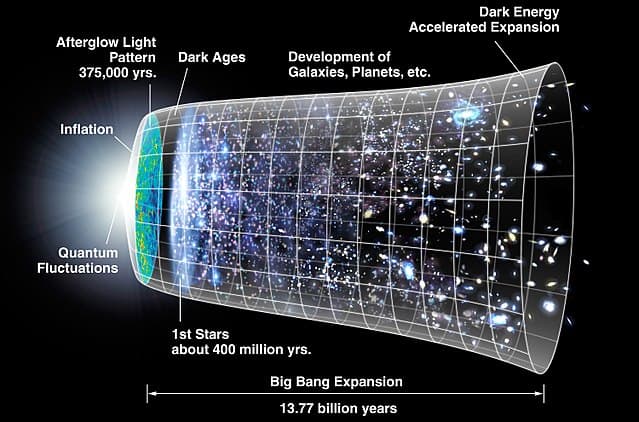
Many creation myths and scientific explanations strived to offer an answer for our origin. In our current era, the Big Bang theory has become the most accepted scientific answer for the origin of everything. But what exactly is the Big Bang theory? What does it state?
The Origin of Everything
Though the ancients may have only hinted at this, we just recently found out that we live in a Universe. Actually, we know this fact for just about 100 years or so.
The earliest cosmological models of our world were geocentric, placing the Earth at the center. When Nicolaus Copernicus developed the heliocentric model in 1543, the Sun replaced the Earth at the center.
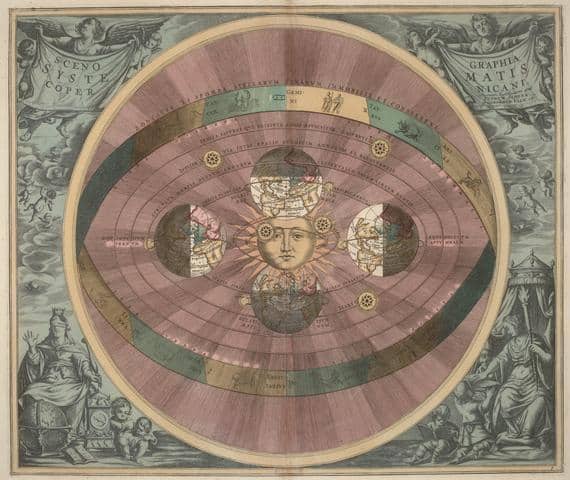
Upon his contributions, other notable figures such as Isaac Newton, Johannes Kepler, Tycho Brahe, and others built upon Copernicus’s works.
Newton developed the law of universal gravitation/attraction, stating that every particle attracts the other with force based on their mass. Kepler and Tycho took Newton’s works and established the laws of planetary motion, while Galileo Galilei, the famous Italian astronomer, pioneered the use of telescopes.

Galileo observed the conglomerations of stars in the Milky Way galaxy, and other celestial objects such as the moons of Jupiter and helped in the task of undermining the idea that everything revolved around the Earth.
We soon realized that there are more stars and planets then we could count, as technology and observations caught up. However, one dilemma remained. Was the Milky Way galaxy the only one in the Universe?
For some time, the concept of a galaxy was believed to be everything that was out there, another word for the Universe. However, this also changed.
Nebulas became a fascination for astronomers as they were very bright. One of these nebulas caught the attention of a young astronomer named Edwin Hubble.
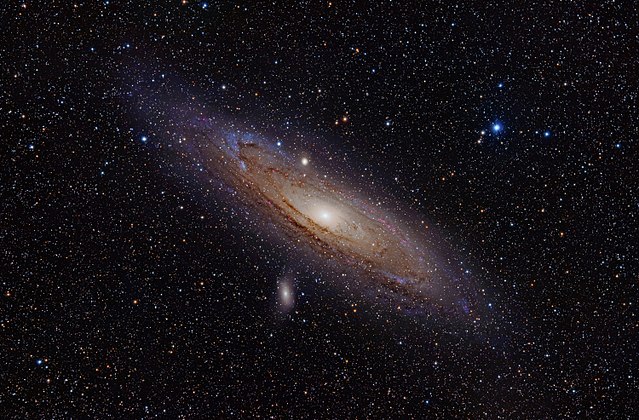
The celestial object was named the Andromeda Nebula, and everyone could observe it with the unaided eye. As telescopes became more advanced, Hubble intensely studied the Andromeda Nebula.
In 1923, he concluded in his works that this nebula was actually another galaxy. Continuing his observations, Hubble began to discover more and more galaxies and soon devised the Hubble Sequence – a system of classification for galaxies based upon their morphologies.
Ultimately, Hubble’s findings proved that our Milky Way was just one out of countless of other galaxies in a vastness of space called the Universe.
This discovery was the beginning of the Big Bang theory. Hubble didn’t devise this thesis, but his findings influenced others to theorize upon the Universe’s creation.
The Big Bang Theory
In his studies, Hubble concluded that objects were moving away from the Earth – something which today is called the Hubble Constant. Celestial objects are moving away from us, and above this, they are doing so faster than the speed of light, which should be theoretically impossible.
This is the basis of the Big Bang theory; space itself is expanding faster than the speed of light since it isn’t susceptible to our current laws and understanding.
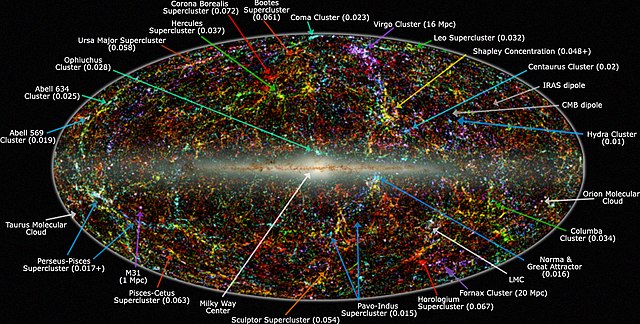
Taking this into account, the Big Bang theory also states that the early Universe was a scorching place. In the first stages, everything was compressed into one incredibly dense point, which was smaller than an atom.
Then something happened and caused this unimaginably small object to expand rapidly. This is also often confused with an explosion. As the expansion started, temperatures began to cool down.

This cooling down effect meant that the Universe should be uniformly filled with radiation, and this was proven to be true. It is called cosmic background radiation, and this residual glow can be seen even on old analog TV’s.
Turning any old TV between channels would result in a screen filled with black and white specs, of which 1% are caused by the photons that have remained since the inception of the Universe.
What happened after the Big Bang?
Two stages followed after the Big Bang occurred. They helped in the shaping of our Universe and are themselves divided among different epochs.
The first stage, the Radiation Era, is comprised out of eight epochs:
- Planck Epoch
- The Grand Unification Epoch
- The Inflationary Epoch
- The Electroweak Epoch
- The Quark Epoch
- The Hadron Epoch
- The Lepton and Nuclear Epochs
The epochs in the Radiation Era, summarize the process in which gravity was created and then broke off from the other fundamental forces of nature such as the strong and weak nuclear, and electromagnetism.
All these forces broke off from one another, or at least it is believed that they were once united. In the beginning, particles like quarks, for example, formed, but they couldn’t undergo the formation of subatomic particles because of the high temperatures.
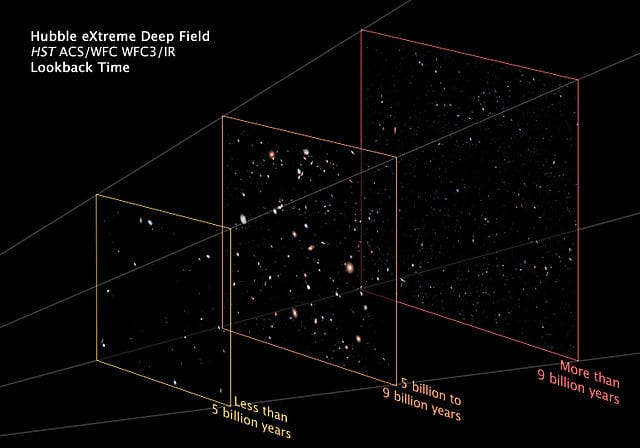
When temperatures dropped down, quarks were able to bind together and form protons and neutrons. They fused and created nuclei during the last epochs.
When this fusion occurred, it led to the creation of the first chemical element in the Universe, helium. This ended the radiation era as the ability to form elements gave way to the Matter Era, which itself is comprised out of three epochs:
- Atomic Epoch
- Galactic Epoch
- Stellar Epoch
Through the process of recombination, after the Universe further cooled down, electrons were able to attach themselves to nuclei, which led to the creation of the Universe’s second element, hydrogen.
The presence of helium and hydrogen led to the birth of atomic clouds, which slowly painted the Universe. These clouds contained small pockets of gas, and gravity may have been powerful enough for atoms to collect.
Clusters of atoms became the seedlings of galaxies. The primordial stars were born, though they were very massive and ended their lives quickly because of it.
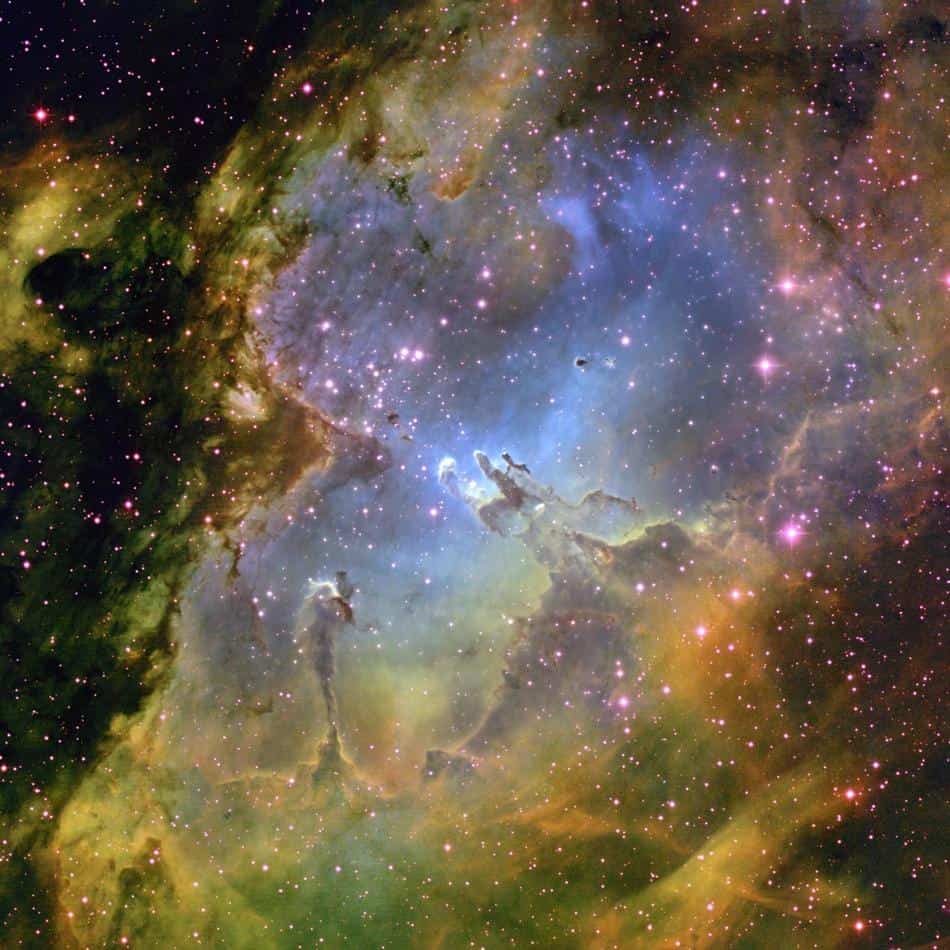
Stars end their lives in events called supernova explosions, but before they die, stars create within their cores all the known elements of our world. The explosions blowed off these materials, and this led to the creation of more stable stars, moons, and planets.
Did you know?
- Based upon Hubble, Einstein, and De Sitter’s works, an astronomer and Catholic priest by the name of Georges Lemaitre proposed in 1927 an expanding model for the Universe. In a sense, he directly contributed to the creation of the Big Bang theory.
- Though Lemaitre and Hubble are the most credited for the theory, they weren’t the ones to name it. The naming of the Big Bang theory happened randomly during a radio broadcast in 1949 when astronomer Fred Hoyle, creator of the Steady State theory, referred to Lemaitre’s theory as the “big bang idea.”
- Though we have an understanding of how the Universe began, we don’t know its exact shape. Our world seems to have no center or perhaps even edges.
Sources:
Image Sources:
- https://upload.wikimedia.org/wikipedia/commons/thumb/6/6f/CMB_Timeline300_no_WMAP.jpg/640px-CMB_Timeline300_no_WMAP.jpg
- https://upload.wikimedia.org/wikipedia/commons/5/57/Heliocentric.jpg
- https://assets3.thrillist.com/v1/image/2794471/size/sk-2017_04_article_main_mobile.jpg
- https://upload.wikimedia.org/wikipedia/commons/thumb/9/98/Andromeda_Galaxy_%28with_h-alpha%29.jpg/640px-Andromeda_Galaxy_%28with_h-alpha%29.jpg
- https://upload.wikimedia.org/wikipedia/commons/thumb/7/7d/2MASS_LSS_chart-NEW_Nasa.jpg/640px-2MASS_LSS_chart-NEW_Nasa.jpg
- https://thumbs.dreamstime.com/b/tv-static-4941028.jpg
- https://upload.wikimedia.org/wikipedia/commons/thumb/a/a3/XDF-separated.jpg/640px-XDF-separated.jpg
- http://www.sun.org/uploads/images/mainimage_Eagle_Nebula.jpeg
